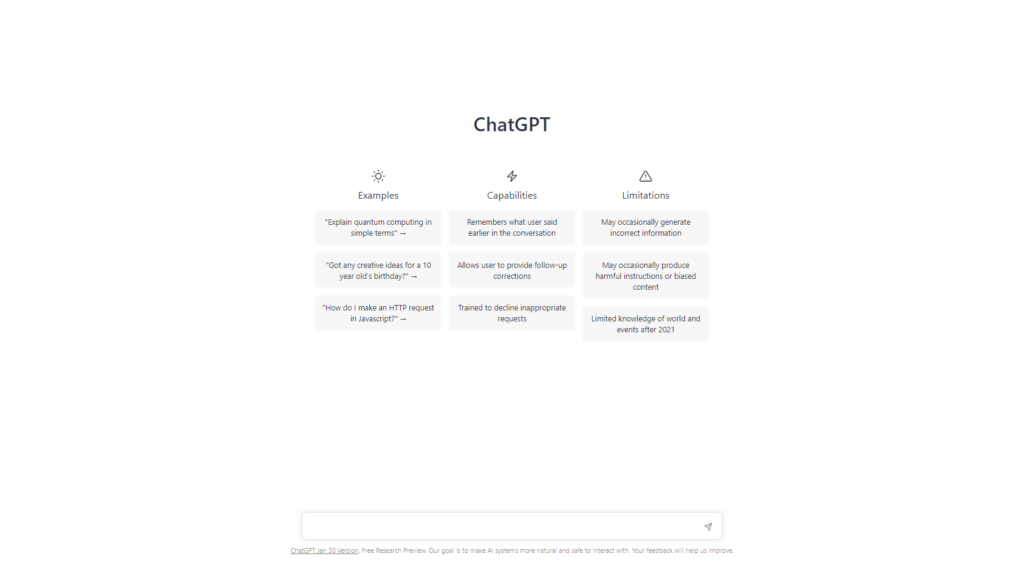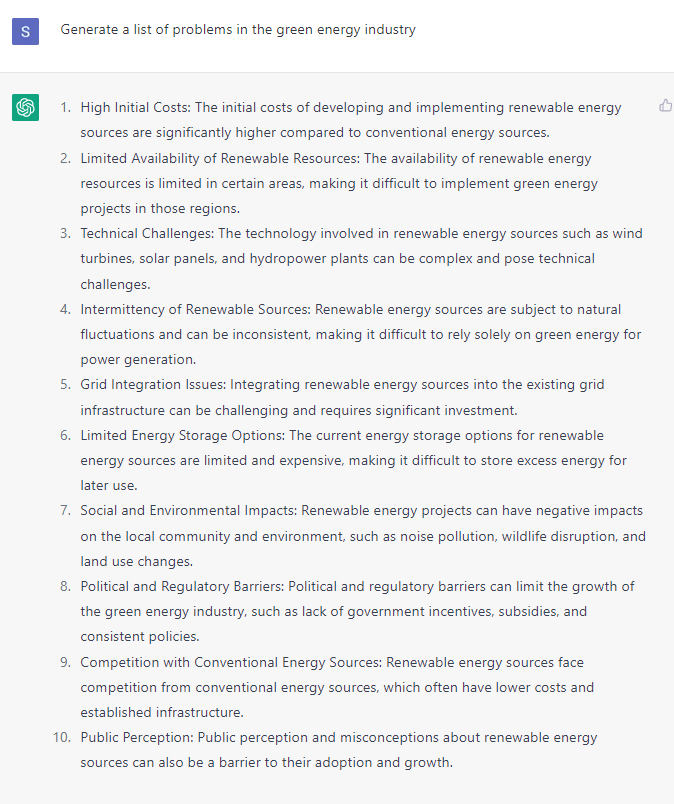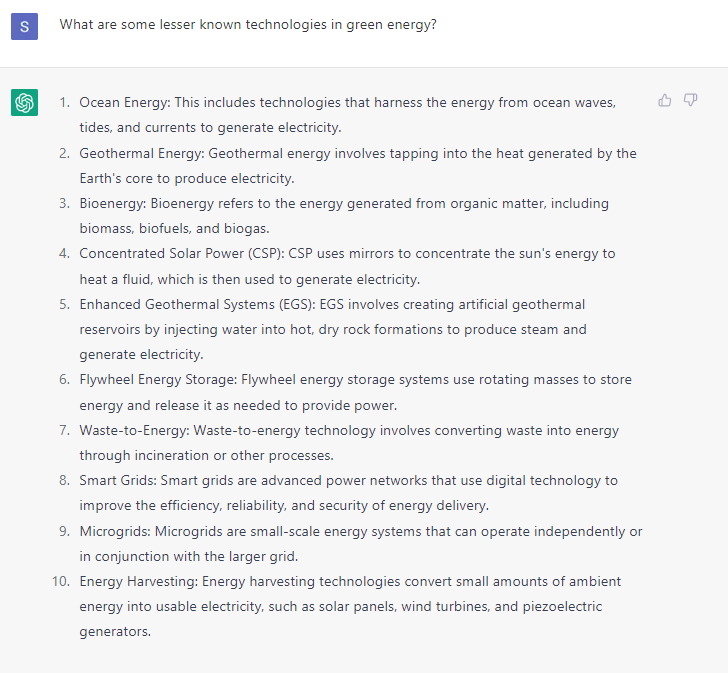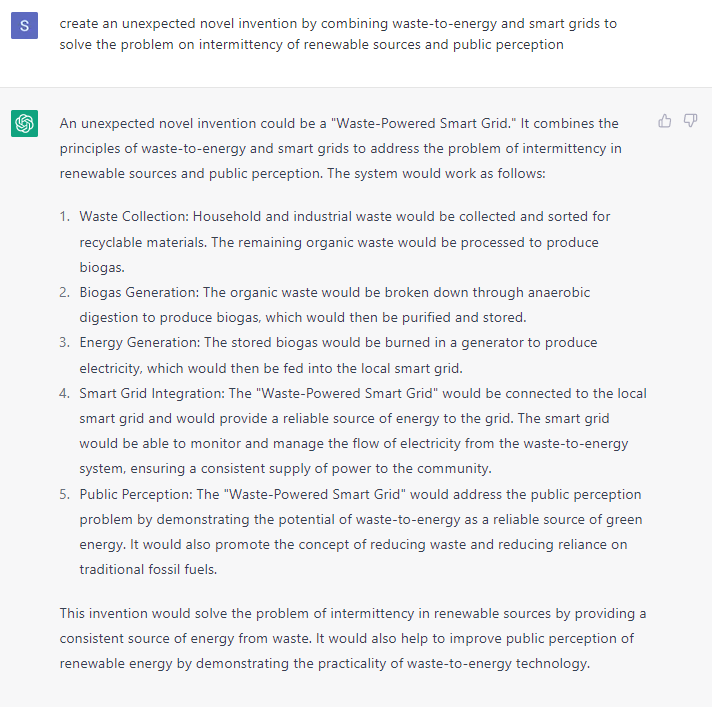Revolutionary advancements in AI technology have given birth to a new era of innovation, and ChatGPT is at the forefront of this change. Gone are the days when human creativity and problem-solving abilities were the only tools to drive innovation. Now, organizations can harness the power of language models to bring their ideas to life, streamline processes, and stay ahead of the competition. But is relying on ChatGPT as an innovation tool a step too far? A replacement for human creativity and intuition? This article explores the potential and limitations of using ChatGPT in the pursuit of innovation.
ChatGPT offers a unique opportunity for innovators to augment their own knowledge, experience, and creative process. By utilizing the vast amount of information contained within its database, innovators can quickly generate new ideas and identify potential solutions to problems. ChatGPT’s ability to process vast amounts of data, understand natural language, and generate human-like text makes it an ideal tool to help innovators overcome mental blocks and generate new perspectives. By integrating ChatGPT into their workflows, innovators can work faster and more effectively, allowing them to focus on turning their ideas into reality and bringing cutting-edge solutions to market.
While ChatGPT offers tremendous opportunities for innovation, it is important to consider the potential dangers of relying too heavily on AI technology. One danger is the possibility of getting stuck on less creative, general ideas, and not thinking outside of the box. ChatGPT is only as creative as the information fed into it and if that information is limited or biased, the output will be limited or biased as well. Another concern is the potential legal ramifications such as inventorship in patents, plagiarism, and exposing confidential information to a third party. When using ChatGPT as an innovation tool, it is crucial to have clear policies in place to ensure that proprietary information is protected and that any generated ideas are original and legally defensible. Inventors and businesses should consider the ethical implications of relying on AI to drive innovation and ensure that the technology is used responsibly and in a manner that benefits society as a whole.
While ChatGPT is an impressive step forward in the field of generative language models, it’s effectiveness as a tool for invention and innovation will ultimately depend on the person using the tool. When we conduct facilitate invention sessions with our clients at ipCapital Group we will often teach the invention team a dozen new creativity tools, like divergent and convergent creativity, associative thinking, random seed, invention perspectives, etc. However, it’s not until our skilled invention facilitators have demonstrated the creativity tool multiple times do the inventors have an intuitive sense of how and when to use the tool. Moreover, when they go back to their daily work routine, they may quickly fall back into old habits of thinking and forget how to use the tools effectively. ChatGPT should be thought of as such a creativity tool: if you want to make the most out of it for invention and innovation, you either need to have the bandwidth to make a regular, deliberate practice of inventing with it, or hire a invention experts to guide you through the process.
For more information about invention services, contact Seth Cronin.
_
Introduction
What is ChatGPT?

ChatGPT is an innovative technology developed by OpenAI that is transforming the way businesses and individuals approach the innovation process. It is a language model that uses advanced algorithms and machine learning techniques to understand and generate human-like text, allowing it to converse with users in a way that resembles a human conversation.
For innovators and inventors, ChatGPT represents a major breakthrough in the ability to quickly generate new ideas and identify potential solutions to problems. Its advanced language processing capabilities allow it to process vast amounts of information and understand natural language, making it an ideal tool for generating new perspectives and finding creative solutions to complex problems.
Consider the example of a high-tech business looking to develop new products. By integrating ChatGPT into its innovation process, the business can analyze market data, identify trends, and generate a list of potential new products based on customer demand. This information can then be used to guide the development of new products and services that are tailored to meet the needs of the market. ChatGPT does not currently access real-time customer information like this, however. In order to use ChatGPT on your customer data, you would either need to manually (painstakingly) feed the data into ChatGPT and ask for appropriate prompts to get insights, or a more advanced engine like GPT-3 or the forthcoming GPT-4 which is trained directly on your customer data. Installing such a system would incur significant expense and other business resources to fully realize, and is not practical for most small-to-medium enterprises.
Another example is that of an inventor who is looking to develop a new product. By using ChatGPT to analyze market data, identify trends, and generate new ideas, the inventor can quickly identify potential areas for improvement and generate a list of innovative new products to develop. This streamlines the innovation process and allows the inventor to focus on turning their ideas into reality. ChatGPT represents a major step forward in the ability of businesses and individuals to innovate. Its advanced language processing model, the vast information it is trained on, and ability to connect disparate concepts in new contexts make it an ideal tool for generating new ideas, solving problems, and driving innovation in the high-tech industry.
–
A brief history of AI and Innovation

The use of AI as an innovation tool has a rich history that can be traced back to the mid-20th century. In the early days of AI, researchers began exploring the potential of machines to solve complex problems and drive innovation. These early AI systems were limited in scope and capability, but they paved the way for more advanced technologies that would come later.
As computer processing power and the availability of data increased in the late 20th and early 21st centuries, AI technology advanced rapidly. This allowed AI systems to become more sophisticated and capable, opening up new possibilities for their use in a variety of industries, including innovation.
Recent developments in AI technology have further driven its use as an innovation tool. Today, many businesses and individuals use AI systems like ChatGPT to generate new ideas, analyze data, and quickly basic text for various business purposes. The continued advancement of AI technology is expected to become increasingly capable of helping businesses and individuals to identify new opportunities, create new products, and automate repetitive tasks that arise in the innovation process. These might include low-level research, developing boiler-plate language for invention disclosures, or quickly generating basic structures for inventions to prevent innovation slow-down from writers block or other types of mental fatigue. In conversations with many creatives, software engineers, and others who use ChatGPT in their regular work, a reoccurring theme is that ChatGPT is excellent at creating rough drafts, pitching a list of common and uncommon ideas, that a human can curate and build upon.
Overall, the use of AI as an innovation tool is a rapidly growing trend that is changing the way businesses and individuals approach the innovation process. With its ability to process vast amounts of data and understand natural language, AI systems like ChatGPT offer a unique and powerful tool for driving innovation, solving complex problems, and generating new inventions. These inventions can be used to create new products, enhance existing products, and expand a company’s IP portfolio of patents and trade secrets.
–
Purpose of the article
The purpose of this article is to highlight the role that ChatGPT can play in the innovation process and to demonstrate why it is becoming increasingly important for innovators to effectively use this tool as part of their overall approach. While ChatGPT offers a powerful tool for driving invention and innovation, it is not a replacement for human creativity and research. Instead, it should be used in conjunction with these skills to enhance and expand the innovation process. Effective use of ChatGPT as an innovation tool is now a table stakes for innovators, and those who do not embrace this new tool risk falling behind in the rapidly evolving landscape of innovation.
–
How to Use ChatGPT to Create the Seeds of Innovation

One of the most powerful ways to use ChatGPT as an innovation tool is to create the seeds of invention. This involves using ChatGPT to generate lists of problems to solve in your industry, suggest types of technology that can be used to solve those problems, and combine the problems and technology to create novel solutions. This approach allows you to quickly create a structured list of ideas that can be used to prioritize and investigate further development.
Additionally, ChatGPT can assist with innovation and commercialization of technology. For example, a new technology or scientific discovery could be described to ChatGPT, including its potential benefits, and ChatGPT could be prompted to list a number of potential customer bases to whom the technology may be valuable. Once a market is identified, you can even request ChatGPT to list a number of customer pain-points, or generate ad-copy that can be used as a starting point for marketing collateral.
To get started, you can use ChatGPT to generate a list of problems in your industry that you would like to solve. This can be as simple as asking ChatGPT to list common problems faced by businesses or customers in your industry or more specific problems faced by your businesses value chain. In the screenshot below, I asked ChatGPT for a list of problems in the green energy industry.

Once you have a list of problems, you can then use ChatGPT to suggest potential technologies that can be used to solve those problems. This might involve asking ChatGPT to list technologies that are commonly used to solve similar problems or to suggest technologies that are emerging in your industry that you may not be familiar with. To continue with the example above, I asked ChatGPT, “What are some lesser known technologies in green energy?”

Once you have a list of problems and technologies, you can use ChatGPT to combine the two to create novel solutions. This might involve asking ChatGPT to suggest ways to use a particular technology to solve a specific problem or to suggest ways to combine multiple technologies to create a solution. This process can generate a large number of ideas in a short period of time, giving you a starting point for further exploration and development. So, the next thing I asked ChatGPT was to “create an unexpected novel invention by combining waste-to-energy and smart grids to solve the problem on intermittency of renewable sources and public perception.”

The inventions that ChatGPT appears to create with these prompts are essentially restating the definition of the technology without adding any creative nuance. In a sense, the most creative part of this process was the human-created prompts. The answers, by contrast, were more like tailored Google search results than creative inventing.
To take full advantage of these ideas, it is important to involve technical, business, and marketing teams at your company in the assessment of these new invention ideas. These teams can provide additional insights into the feasibility of each idea and help to prioritize which ideas are worth pursuing further. By incorporating a multidisciplinary approach, you can ensure that you are exploring a wide range of potential solutions and are considering both the technical and business implications of each idea.
–
Benefits of using ChatGPT for Innovation

ChatGPT has the ability to generate new ideas, explore new information, and facilitate collaboration, making it an invaluable tool for businesses looking to stay ahead of the curve. In this section, we’ll explore some of the key benefits of incorporating ChatGPT into your innovation process and what inventors can expect when they start using ChatGPT in their invention process.
- Increased efficiency: Using ChatGPT can significantly increase the efficiency of your innovation process. ChatGPT can process large amounts of data and generate ideas in a fraction of the time it would take a human to do so. This can free up time for your team to focus on other aspects of the innovation process and help you get to market faster.
- Access to new information: ChatGPT has been trained on a vast amount of information, which makes it an ideal tool for exploring new ideas and information. By incorporating ChatGPT into your innovation process, you can quickly access new information and explore new ideas that you may not have considered otherwise.
- Diversification of ideas: ChatGPT can generate a large number of ideas in a short period of time, which can help to diversify your pipeline of potential solutions. This can help you to identify new opportunities and reduce the risk of putting all your eggs in one basket.
- Improved collaboration: ChatGPT can help to facilitate collaboration between members of your team who may not have worked together before. By generating a list of ideas, ChatGPT can provide a starting point for discussion and help to get everyone on the same page.
- Enhanced creativity: ChatGPT can help to enhance your team’s creativity by providing new perspectives and suggesting new approaches. By incorporating ChatGPT into your innovation process, you can encourage your team to think outside the box and come up with more innovative solutions.
Incorporating ChatGPT into your business’s innovation process can bring a range of benefits, from increased efficiency to enhanced creativity. By leveraging ChatGPT’s vast knowledge and ability to process large amounts of data, you can drive innovation and take your business to the next level. Whether you are an inventor, entrepreneur, or business leader, ChatGPT can provide new insights and ideas that can help you to achieve your goals.
–
Can ChatGPT be used as an Innovation Creativity Tool?

Yes, ChatGPT can be used as an innovation creativity tool. The AI language model can augment human knowledge and experience, overcome mental blocks, generate new perspectives, and be integrated into innovation workflows, leading to faster and more effective innovation.
One of the biggest advantages of ChatGPT is its ability to augment human knowledge and experience. By leveraging its vast database of information and understanding of complex concepts, ChatGPT can provide new insights and perspectives that might otherwise go unnoticed by a human innovator. This allows innovators to consider solutions and possibilities they may not have thought of on their own, and to make more informed decisions about the direction of their work.
Innovation can often be hindered by mental blocks, lack of knowledge, or simply a lack of time to research new ideas. ChatGPT can help overcome these challenges by providing quick and relevant information on a wide range of topics, generating new perspectives and ideas, and helping to break through mental blocks. This can lead to more creative and innovative solutions that might not have been possible without ChatGPT’s assistance.
Incorporating ChatGPT into the innovation process requires a bit of planning and integration into existing workflows. By understanding the capabilities of ChatGPT and how it can augment the human innovation process, businesses can identify the best way to integrate ChatGPT into their existing workflows. This may include using ChatGPT for research, generating new ideas, or as a tool for collaboration and decision-making.
By augmenting human knowledge and experience, overcoming mental blocks, and integrating ChatGPT into innovation workflows, businesses can foster faster and more effective innovation. ChatGPT can help businesses move from idea generation to implementation more quickly, freeing up time and resources for other critical tasks. Additionally, by using ChatGPT to explore new ideas and perspectives, businesses can improve the quality of their innovation and make better-informed decisions, leading to more successful outcomes.
–
Dangers of Using AI for Innovation

While AI tools like ChatGPT offer a wealth of benefits for innovators, there are also some risks and dangers associated with incorporating AI into the innovation process. These include:
- Over-reliance on AI: The risk of relying too heavily on AI to generate ideas, without the input or creativity of human inventors, could result in less innovative solutions.
- Lack of originality: AI solutions may be limited by the training data they are exposed to, and this can sometimes result in less unique or original ideas.
- Legal implications: There may be legal implications when using AI for innovation, such as questions of inventorship in patents, plagiarism, and the exposure of confidential information to third parties.
- Data privacy: The use of AI for innovation may require access to sensitive business and personal data, which could raise concerns about data privacy and security.
- Ethical considerations: The use of AI for innovation may raise ethical considerations, such as the impact on jobs and social inequality.
The danger of over-reliance on AI is that it may limit the creativity and originality of the solutions generated. For example, if a business were to rely solely on ChatGPT to generate ideas for new products, it could result in similar or redundant products being developed, as the AI tool may draw upon similar training data. This could lead to a decrease in competitiveness and a loss of market share.
AI solutions may be limited by the training data they are exposed to, which can result in less unique or original ideas. For example, if a business were to use ChatGPT to generate ideas for new product features, it may generate features that have already been developed by competitors, leading to a decrease in the competitiveness of the business.
There are potential legal implications when using AI for innovation, such as questions of inventorship in patents. For example, if an inventor were to use ChatGPT to generate ideas for a new product, there may be questions about who is the true inventor of the product and who is entitled to the patent. Additionally, there may be concerns about plagiarism, especially if the AI tool generates ideas that are similar to existing products or technologies.
The use of AI for innovation may require access to sensitive business and personal data, which could raise concerns about data privacy and security. For example, if a business were to use ChatGPT to generate ideas for new products, it may require access to customer data and market research, which could put confidential information at risk of being exposed to third parties.
The use of AI for innovation may raise ethical considerations, such as the impact on jobs and social inequality. For example, if a business were to use ChatGPT to automate certain tasks or jobs, it could lead to job loss and decreased job security for workers. Additionally, it could exacerbate existing inequalities and disparities in society, as AI tools may perpetuate biases and perpetuate existing power imbalances.
–
ChatGPT’s Promise and Pitfalls
In conclusion, ChatGPT provides a powerful tool for innovators and businesses to augment their knowledge, experience, and creativity. It has the potential to generate new ideas, overcome mental blocks, and speed up the innovation process. However, it is crucial to use ChatGPT responsibly and consider the potential risks, such as sticking to general ideas and exposing confidential information. As AI continues to advance, it is important for innovators to not rely solely on ChatGPT and integrate it into their workflows in a manner that promotes human creativity, ethics, and accountability. The future of AI and innovation lies in finding the right balance between technology and human expertise. Therefore, businesses and innovators must approach AI with a responsible and ethical mindset to ensure the benefits outweigh the drawbacks and continue pushing the boundaries of what is possible.
Ultimately, ChatGPT and similar language tools will never be a replacement for human-led invention processes, like the Invention On Demand, ipScan, and data-driven ipLandscape and ipAnalytics processes we regularly facilitate at ipCapital Group. That’s because the team at ipCG are invention and innovation domain experts, not a generalized language model. However, our team is learning to use ChatGPT as another tool in the creativity toolbox, and so far, we are impressed with the results. Contact us for more information about how you can create a more systematic approach to invention, innovation, and intellectual property at your company.

